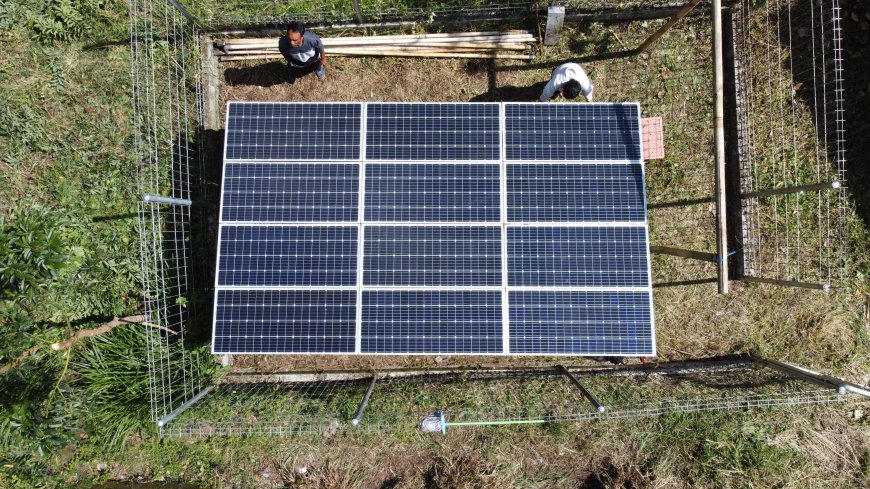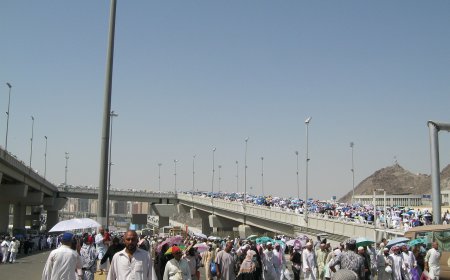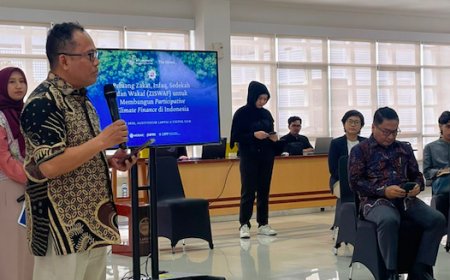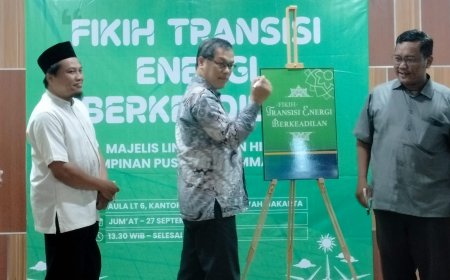Solar Energy for Mosque at Rinjani
Each panel has dozens of solar cells arranged in series and parallel. They absorb photon energy from the sun to be converted into electricity.

The new sun slip in Sembalun Village, East Lombok, West Nusa Tenggara (NTB), Tuesday (28/3). Tihin Todi the muazin was preparing to cry the call to prayer of the time of Zhuhur. “Allahuakbar, Allahuakbar!” The shrill sound of Al-Ummah Al-Islamiyah Mosque echoed across the sky of Sambalun.
That afternoon, Tihin adhan was different from the usual days. The voice of call to prayer from the mosque resound singularly without any other admonition from the neighboring mosque. The power outage of PLN since noon didn't hamper the speakers of mosques in the Sembalun neighborhood.
“Only from this mosque can the sound of azan be heard,” Muhammad Shahidul Wathan, the mosque's overseer, said during a conversation with Republika.
For a week now, the mosque administrators have tried not to use electricity from PLN. The electricity powering the mosque's speakers comes from a dozen solar panels installed on the side and roof of the mosque. On the side of the hall, there are 12 plastered panels. Each panel has a power capacity of up to 200 watts. Meanwhile, there are five panels attached to the roof. The width and capacity of each panel is larger than the panels located on the side, which can reach up to 460 watts.

Each panel has dozens of solar cells arranged in series and parallel. They function to absorb photon energy from the sun to then be converted into electricity. The solar energy that has been converted into alternating current (AC) electricity is then fed into the inverter to be converted into direct current/DC electricity.
Once converted, the DC-formatted electricity was then stored into two large batteries each with a capacity of 4,800 watts. The energy in this battery that supplies electricity for lighting needs and water flow inside the mosque.
These solar panels are capable of absorbing up to 300 Watts of electrical energy if the day is sunny. When rainfall is high and the weather is foggy, the energy that solar panels can absorb is reduced. “Like today, it absorbed 130 watts,” said Ayub, a mosque administrator who has received training to care for the solar panels.
According to Wathan, the mosque has been using solar power for a week now. The mosque prosperity council (DKM) can also be more frugal. Usually, they have to allocate funds to pay the electricity bills of the mosque located at the foot of Mount Rinjani. In addition to being more efficient, they could have avoided the impact of PLN power outages. “The PLN cable goes through the forest so it is unstable. If there is a storm or a big rain, the electricity goes out immediately,” Wathan said.
Not only mosques enjoy the presence of such solar panels. There are schools, kindergartens and some residents' homes that also benefit from this clean energy. Electricity from solar panels can even illuminate seven streetlight points that have long been extinguished.
The solar panels installed on the roof are the fruit of the Alms of Energy program initiated by the Collaboration of Muslims for Climate Impact (MOSAIC). Meanwhile, the solar panels next to the mosque were a program of another social organization that was later revitalized by the Sedekah Energi or Energy Alms program.
Wathan is grateful there is a solar panel program at that mosque. In addition to avoiding the effects of power outages due to weather, the presence of solar panels could revive the water pumps that residents use for ablution and daily activities, even to irrigate plantations around mosques. “The problem we face is drought. Yesterday due to the limited flow of electricity, we were short of water. In order to worship alone, the worshipper must go home. We even had to buy water using seesaw trucks to deliver to the community,” said the man, who also serves as secretary of the village.
The solar panels that have been installed meet 100 percent of the electricity needs of the mosque, which is the center of worship and social activities for more than 100 worshippers. Muhammad Ali Yusuf, the MOSAIC Steering Board of Nahdlatul Ulama Institute for Disaster Management and Climate Change (LPBI NU), insists that mosques are more than just places of worship.
According to him, the mosque is a center of social activities for the community. For that, he explained, it is already the responsibility of all parties to spread awareness about the importance of switching to renewable energy sources from mosques.
Through Sedekah Energi, MOSAIC strives to promote the use of energy that does not damage the environment and minimizes pollution as one of the solutions to the climate problem. In addition, MOSAIC encourages the collaboration of Muslim groups to emerge as leaders who respect the challenges of climate impacts through an approach that aligns with Islamic values.
The first Energy Alms Initiative was held at Al-Ummah Al-Islamiyah PP Yami Mosque, Sembalun, East Lombok. Alms can occur through two directions, namely alms for technical procurement of solar panels following community capacity increase and alms from surrounding communities in managing and caring for solar panel systems.
Energy Alms Coordinator Elok Faiqotul Mutia explained that in addition to providing assistance in the form of solar panels, residents also get training and knowledge transfer. “In Sembalun we have given training in the maintenance and operation of solar panels to 14 men and 5 women. It is hoped that the 19 residents will be able to take a role in self-maintenance so that the solar panels can function properly for up to 25 years,” he said.







